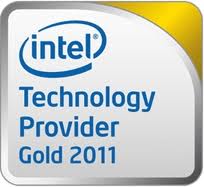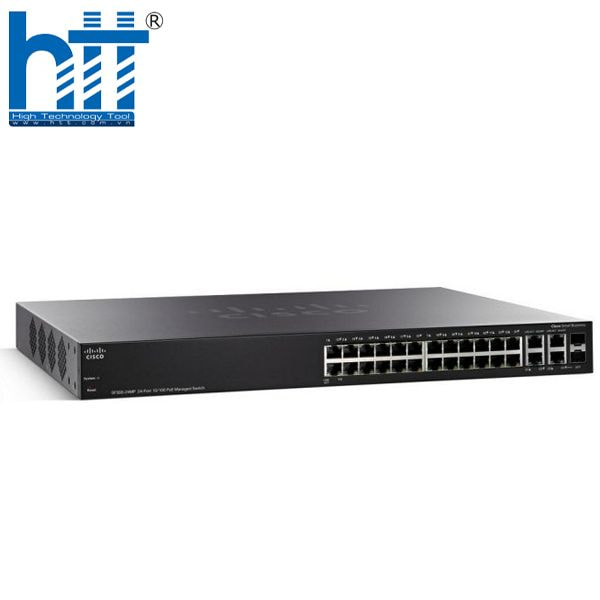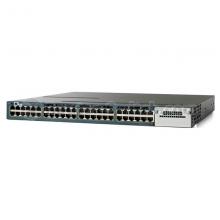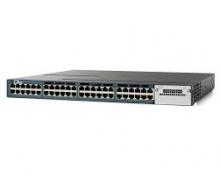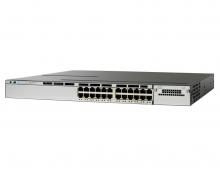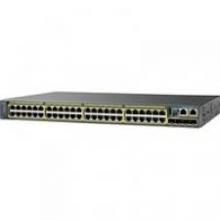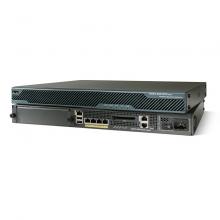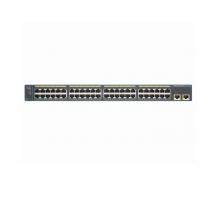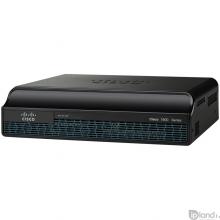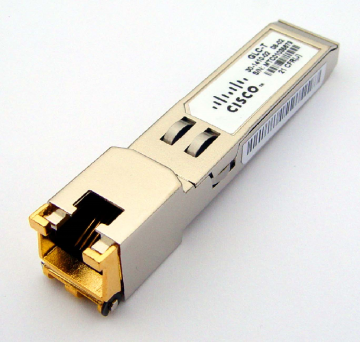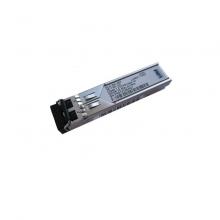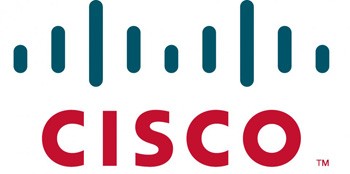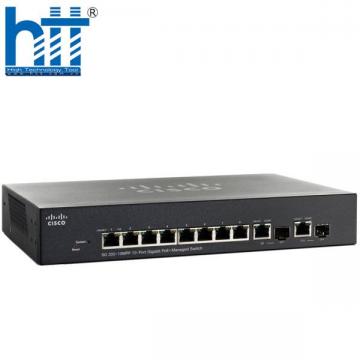|
Bạn đang tìm kiếm một switch mạng đáng tin cậy, có khả năng cấp nguồn cho thiết bị và mở rộng mạng LAN cho doanh nghiệp nhỏ? Cùng Hợp Thành Thịnh khám phá Switch Cisco SF300-24MP 24 Ports PoE+ 375W + 2x1GE + 2 combo M-GBIC – thiết bị mạng tối ưu cho mọi nhu cầu kết nối.
1. Tổng quan về Switch Cisco SF300-24MP
Switch Cisco SF300-24MP thuộc dòng sản phẩm Cisco Small Business 300 series, được thiết kế để phù hợp với cả 3 lớp mạng, giúp doanh nghiệp nhỏ dễ dàng triển khai hệ thống LAN ổn định. Với 24 cổng PoE+ 10/100, công suất lên đến 375W, thiết bị này có khả năng cấp nguồn trực tiếp cho các thiết bị như camera IP, điểm truy cập Wifi và điện thoại IP mà không cần adapter rời.
Ngoài ra, Switch Cisco SF300-24MP còn tích hợp 2 cổng Gigabit 10/100/1000 và 2 mini-GBIC, giúp kết nối các máy chủ hoặc mở rộng mạng giữa các phòng ban trở nên linh hoạt và nhanh chóng.
2. Thiết kế và tính năng nổi bật của Switch Cisco SF300-24MP
2.1 Thiết kế chuyên nghiệp và linh hoạt
Switch Cisco SF300-24MP có thiết kế để bàn hoặc lắp rack, phù hợp với không gian văn phòng hoặc phòng server. Thiết bị tự động chuyển đổi chế độ cáp thẳng và cáp chéo (MDI/MDI-X), giúp giảm thiểu lỗi kết nối và tối ưu trải nghiệm mạng.
2.2 Hiệu năng và quản lý dữ liệu thông minh
Switch Cisco SF300-24MP hỗ trợ băng thông Full Duplex 200Mbps cho mỗi port, kèm theo tính năng Address Learning and Aging và Data Flow Control, đảm bảo việc truyền dữ liệu nhanh chóng, ổn định, giảm hiện tượng tắc nghẽn mạng trong các môi trường doanh nghiệp.
2.3 Khả năng cấp nguồn PoE+ mạnh mẽ
Với 24 cổng PoE+, Switch Cisco SF300-24MP cung cấp tổng công suất 375W, đủ để cấp nguồn cho camera IP, điểm truy cập Wifi và điện thoại IP cùng lúc. Điều này giúp giảm chi phí đầu tư phụ kiện và tiết kiệm không gian cho doanh nghiệp.
3. Lợi ích khi sử dụng Switch Cisco SF300-24MP
- Kết nối tất cả các thiết bị trong phòng ban hoặc văn phòng nhỏ chỉ với một thiết bị.
- Hỗ trợ mở rộng mạng LAN giữa các phòng ban hoặc văn phòng chi nhánh.
- Giảm thiểu sự cố mạng nhờ tính năng quản lý dữ liệu thông minh.
- Tối ưu hóa năng lượng nhờ khả năng cấp nguồn PoE+ cho các thiết bị đầu cuối.
- Thiết kế linh hoạt, dễ dàng lắp đặt và bảo trì.
4. Ứng dụng thực tế của Switch Cisco SF300-24MP
Switch Cisco SF300-24MP phù hợp với nhiều nhu cầu kết nối trong doanh nghiệp:
- Kết nối máy tính và máy in: Mọi thiết bị trong phòng ban được kết nối nhanh chóng và ổn định.
- Kết nối camera giám sát IP: 24 cổng PoE+ cung cấp nguồn trực tiếp, không cần adapter rời.
- Điểm truy cập Wifi: Hỗ trợ triển khai mạng không dây cho văn phòng nhỏ.
- Mở rộng mạng LAN: Sử dụng 2 cổng Gigabit hoặc mini-GBIC để kết nối giữa các switch, mở rộng mạng dễ dàng.
5. Bảng so sánh Switch Cisco SF300-24MP với các sản phẩm cùng cấu hình
| Tên sản phẩm | Số cổng PoE+ | Công suất PoE | Cổng Gigabit | Mini-GBIC | Ứng dụng |
|---|
| Cisco SF300-24MP |
24 |
375W |
2 x 1GE |
2 |
Doanh nghiệp nhỏ, mở rộng LAN |
| Netgear GS724TP |
24 |
370W |
2 x 1GE |
2 |
Văn phòng nhỏ, PoE cho camera |
| TP-Link TL-SG3424P |
24 |
384W |
2 x 1GE |
2 |
Doanh nghiệp nhỏ, mạng Wifi, IP camera |
| D-Link DGS-1210-28P |
24 |
180W |
4 x 1GE |
2 |
Doanh nghiệp vừa, camera và VoIP |
6. Câu hỏi thường gặp (FAQ) về Switch Cisco SF300-24MP
Q1: Switch Cisco SF300-24MP có hỗ trợ lắp rack không?
A1: Có, Switch Cisco SF300-24MP được thiết kế để bàn hoặc rack mount.
Q2: Thiết bị có cung cấp nguồn PoE cho camera không?
A2: Có, 24 cổng PoE+ với tổng công suất 375W giúp cấp nguồn trực tiếp cho camera IP.
Q3: Switch Cisco SF300-24MP có hỗ trợ mạng Gigabit không?
A3: Có, thiết bị có 2 cổng 10/100/1000 và 2 mini-GBIC để kết nối Gigabit.
Q4: Sử dụng Switch Cisco SF300-24MP cho doanh nghiệp nhỏ có hợp lý không?
A4: Rất hợp lý, phù hợp kết nối máy tính, máy in, camera, wifi trong doanh nghiệp nhỏ.
Q5: Làm thế nào để mở rộng mạng LAN bằng Switch Cisco SF300-24MP?
A5: Sử dụng cổng Gigabit hoặc mini-GBIC để kết nối với switch khác và mở rộng mạng dễ dàng.
Liên Hệ Ngay Để Được Tư Vấn & Đặt Hàng
Liên hệ ngay với Hợp Thành Thịnh để đặc hàng và được tư vấn miễn phí. Ngoài ra Hợp Thành Thịnh còn cung cấp thêm các hãng như: Juniper Networks, HPE Aruba, TP-Link,...Không chỉ cung cấp sản phẩm, chúng tôi còn có dịch vụ sửa chữa chuyên nghiệp sau bảo hành cho các thiết bị như: Màn hình, thiết bị mạng, máy in, máy tính, máy chiếu, ups,... Đồng hành và hỗ trợ tận tâm cho các anh em kỹ thuật, IT, và các cửa hàng tin học.
CÔNG TY TNHH THƯƠNG MẠI DỊCH VỤ HỢP THÀNH THỊNH
Showroom: 406/55 Cộng Hòa, Phường Tân Bình, Thành phố Hồ Chí Minh, Việt Nam
Hotline: 0902 413 077
Website: https://thegioicisco.com/
Thông số kỹ thuật của Switch Cisco SF300-24MP
|
Device Type
|
Switch - 24 ports PoE+ - L2 - Managed
|
|
Enclosure Type
|
Desktop, rack-mountable 1U
|
|
Subtype
|
Fast Ethernet
|
|
Ports
|
- 24 10/100 PoE+ ports with 375W power budget
- 2 10/100/1000 ports
- 2 combo mini-GBIC
|
|
Power Over Ethernet (PoE)
|
PoE+
|
|
PoE Budget
|
375W
|
|
Performance
|
Switching capacity : 12.8 Gbps ¦ Forwarding performance (64-byte packet size) :9.52 Mpps
|
|
Capacity
|
ACL rules : up to 512
|
|
MAC Address Table Size
|
8K entries
|
|
Jumbo Frame Support
|
10KB
|
|
Routing Protocol
|
Static IPv4 routing
|
|
Remote Management Protocol
|
SNMP 1, RMON 1, RMON 2, RMON 3, RMON 9, Telnet, SNMP 3, SNMP 2c, HTTP, HTTPS, SSH, CLI
|
|
Features
|
Layer 3 switching, Layer 2 switching, DHCP support, BOOTP support, VLAN support, IGMP snooping, Syslog support, DoS attack prevention, port mirroring, DiffServ support, Weighted Round Robin (WRR) queuing, Broadcast Storm Control, IPv6 support, Multicast Storm Control, Unicast Storm Control, firmware upgradable, Spanning Tree Protocol (STP) support, Rapid Spanning Tree Protocol (RSTP) support, Multiple Spanning Tree Protocol (MSTP) support, Trivial File Transfer Protocol (TFTP) support, Access Control List (ACL) support, Quality of Service (QoS), Jumbo Frames support, MLD snooping
|
|
Compliant Standards
|
IEEE 802.3, IEEE 802.3u, IEEE 802.3z, IEEE 802.1D, IEEE 802.1Q, IEEE 802.3ab, IEEE 802.1p, IEEE 802.3af, IEEE 802.3x, IEEE 802.3ad (LACP), IEEE 802.1w, IEEE 802.1x, IEEE 802.1s, IEEE 802.1ab (LLDP), IEEE 802.3at
|
|
Power
|
100-240V 50-60 Hz, internal, universal
|
|
Dimensions (WxDxH)
|
17.3 x 1.45 x 13.78 in. (440 x 44.45 x 350 mm)
|
|
Weight
|
11.2 lb (5.08 kg)
|
|
Operating temperature
|
32°to 122°F (0°to 50°C)
|
|
Storage temperature
|
-4°to 158°F (-20°to 70°C)
|
|
Operating humidity
|
10% to 90%, relative, noncondensing
|
Tính năng của Switch Cisco SF300-24MP
|
Layer 2 Switching
|
|
Spanning Tree Protocol (STP)
|
Standard 802.1d Spanning Tree support
Fast convergence using 802.1w (Rapid Spanning Tree [RSTP]), enabled by default
8 instances are supported
Multiple Spanning Tree instances using 802.1s (MSTP)
|
|
Port grouping
|
Support for IEEE 802.3ad Link Aggregation Control Protocol (LACP)
- Up to 8 groups
- Up to 8 ports per group with 16 candidate ports for each (dynamic) 802.3ad link aggregation
|
|
VLAN
|
Support for up to 4096 VLANs simultaneously Port-based and 802.1Q tag-based VLANs MAC-based VLAN
Management VLAN
Private VLAN Edge (PVE), also known as protected ports, with multiple uplinks
Guest VLAN Unauthenticated VLAN
Dynamic VLAN assignment via Radius server along with 802.1x client authentication
CPE VLAN
|
|
Voice VLAN
|
Voice traffic is automatically assigned to a voice-specific VLAN and treated with appropriate levels of QoS.
Auto voice capabilities deliver network-wide zero touch deployment of voice endpoints and call control devices.
|
|
Multicast TV VLAN
|
Multicast TV VLAN allows the single multicast VLAN to be shared in the network while subscribers remain in separate VLANs (Also known as MVR)
|
|
Q-in-Q VLAN
|
VLANs transparently cross a service provider network while isolating traffic among customers
|
|
Generic VLAN Registration Protocol (GVRP)/Generic Attribute Registration Protocol (GARP)
|
Protocols for automatically propagating and configuring VLANs in a bridged domain
|
|
Unidirectional Link Detection (UDLD)
|
UDLD monitors physical connection to detect unidirectional links caused by incorrect wiring or cable/port faults to prevent forwarding loops and blackholing of traffic in switched networks
|
|
Dynamic Host ConfigurationProtocol (DHCP) Relay at Layer 2
|
Relay of DHCP traffic to DHCP server in different VLAN. Works with DHCP Option 82
|
|
Internet Group ManagementProtocol (IGMP) versions 1, 2, and3 snooping
|
IGMP limits bandwidth-intensive multicast traffic to only the requesters; supports 1K multicast groups (source-specific multicasting is also supported)
|
|
IGMP Querier
|
IGMP querier is used to support a Layer 2 multicast domain of snooping switches in the absence of a multicast router
|
|
Head-of-line (HOL) blocking
|
HOL blocking prevention
|
|
Jumbo Frames
|
Up to 9K (9216) bytes
|
|
Layer 3
|
|
IPv4 routing
|
Wirespeed routing of IPv4 packets
Up to 512 static routes and up to 128 IP interfaces
|
|
Classless Inter-Domain Routing(CIDR)
|
Support for CIDR
|
|
Layer 3 Interface
|
Configuration of layer 3 interface on physical port, LAG, VLAN interface or Loopback interface
|
|
DHCP relay at Layer 3
|
Relay of DHCP traffic across IP domains
|
|
User Datagram Protocol (UDP)relay
|
Relay of broadcast information across Layer 3 domains for application discovery or relaying of BootP/DHCP packets
|
|
DHCP Server
|
Switch functions as an IPv4 DHCP Server serving IP addresses for multiple DHCP pools/scopes
Support for DHCP options
|
|
Security
|
|
Secure Shell (SSH) Protocol
|
SSH is a secure replacement for Telnet traffic. SCP also uses SSH. SSH v1 and v2 are supported
|
|
Secure Sockets Layer (SSL)
|
SSL support: Encrypts all HTTPS traffic, allowing highly secure access to the browser-based management GUI in the switch
|
|
IEEE 802.1X (Authenticator role)
|
802.1X: RADIUS authentication and accounting, MD5 hash; guest VLAN; unauthenticated VLAN, single/multiple host mode and single/multiple sessions
Supports time-based 802.1X Dynamic VLAN assignment
|
|
Web Based Authentication
|
Web based authentication provides network admission control through web browser to any host devices and operating systems.
|
|
STP Bridge Protocol Data Unit(BPDU) Guard
|
A security mechanism to protect the network from invalid configurations. A port enabled for BPDU Guard is shut down if a BPDU message is received on that port.
|
|
STP Root Guard
|
This prevents edge devices not in the network administrator’s control from becoming Spanning Tree Protocol root nodes.
|
|
DHCP snooping
|
Filters out DHCP messages with unregistered IP addresses and/or from unexpected or untrusted interfaces. This prevents rogue devices from behaving as a DHCP Server.
|
|
IP Source Guard (IPSG)
|
When IP Source Guard is enabled at a port, the switch filters out IP packets received from the port if the source IP addresses of the packets have not been statically configured or dynamically learned from DHCP snooping. This prevents IP Address Spoofing.
|
|
Dynamic ARP Inspection (DAI)
|
The switch discards ARP packets from a port if there is no static or dynamic IP/MAC bindings or if there is a discrepancy between the source or destination address in the ARP packet. This prevents man-in-the-middle attacks.
|
|
IP/Mac/Port Binding (IPMB)
|
The features (DHCP Snooping, IP Source Guard, and Dynamic ARP Inspection) above work together to prevent DOS attacks in the network, thereby increasing network availability.
|
|
Secure Core Technology (SCT)
|
Ensures that the switch will receive and process management and protocol traffic no matter how much traffic is received.
|
|
Secure Sensitive Data (SSD)
|
A mechanism to manage sensitive data (such as passwords, keys, etc) securely on the switch, populating this data to other devices, and secure autoconfig. Access to view the sensitive data as plaintext or encrypted is provided according to the user configured access level and the access method of the user.
|
|
Layer 2 isolation Private VLAN Edge (PVE) with community VLAN
|
PVE (also known as protected ports) provides Layer 2 isolation between devices in the same VLAN, supports multiple uplinks.
|
|
Port security
|
The ability to lock Source MAC addresses to ports, and limits the number of learned MAC
addresses.
|
|
RADIUS/TACACS+
|
Supports RADIUS and TACACS authentication. Switch functions as a client.
|
|
Storm control
|
Broadcast, multicast, and unknown unicast
|
|
RADIUS accounting
|
The RADIUS accounting functions allow data to be sent at the start and end of services, indicating the amount of resources (such as time, packets, bytes, and so on) used during the session.
|
|
DoS prevention
|
Denial-of-Service (DOS) attack prevention
|
|
ACLs
|
Support for up to 512 rules
Drop or rate limit based on source and destination MAC, VLAN ID or IP address, protocol, port, differentiated services code point (DSCP)/IP precedence, TCP/UDP source and destination ports,
802.1p priority, Ethernet type, Internet Control Message Protocol (ICMP) packets, IGMP packets, TCP flag, Time-based ACLs supported.
|
|




